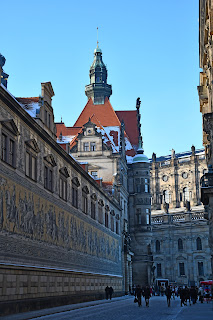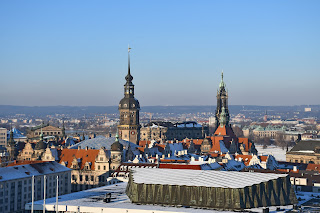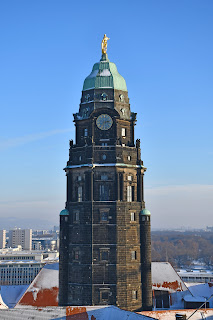Dresden and Meissen
I have a mental list of places which, despite and because of their proximity to Prague, I have never visited. Dresden was on the top of that list for a long time, as I had even spent an entire two months in Berlin without ever stopping by.
I finally visited Dresden this winter with
my dad and my sister. Exaggerating only slightly, the journey was the best of
times and the worst of times. It had recently snowed, turning the scenery into
both a magical land straight from a Christmas film and a driver’s worst
nightmare. We spent a whole hour trying to circumvent Prague and perennially
getting stuck behind slow-moving trucks on single-lane country roads. Once we
got to Germany, however, the clearing skies made for just recompense.
Instead of going directly to Dresden as we
had originally planned, we drove a little further to Moritzburg. The town
achieved fame thanks to the Czechoslovak-GDR film “Three Hazelnuts for
Cinderella,” which was partly filmed at the local castle and has outlived both
of the countries that made it. The iconic status of this classic, which is a
Christmas staple in German-speaking countries, as well as the Czech Republic,
Slovakia, and Norway, has led to the conversion of the entire town into a
pilgrimage centre, with posters and signs all around dedicated to nothing but
the film.
While my sister toured the castle’s
interior, which of course hosts an expansive exhibition of film memorabilia and
replicas, my dad and I walked around the half-frozen lake that surrounds the
castle. The tracks in the snow indicated that some people managed to cross the
lake onto a little island, but we did not want to try our luck replicating
their success.
We spent the rest of the day touring
Dresden. The city was all decked out in Christmas decorations and Christmas
stalls filled the town squares. Contrary to my expectations, the centre is
quite small and walkable; we managed to see everything I wanted to see, some
things even twice. My favourite sight was the Frauenkirche, which has an unusually
high dome and gives the city its distinctive skyline. Legend has it that it was
his by a hundred cannon balls during the Seven Years’ War, but they simply
bounced off. The church was not as lucky during World War II, when allied
firebombing levelled the city. Nothing but rubble survived of the church for
half a century, until the church was finally rebuilt in 2005.
The next day, we saw a little more of
Dresden, including the famed Milk Shop on Bautzner Street, which is famed for
its hand-painted tiles. Rather than returning home immediately, however, we
made one last stop in Meissen, a town renowned across the continent for being
the first and finest European producer of porcelain. Some of the credit for the
discovery of this process goes to Johann Friedrich Böttger, who claimed he could
make gold from rubbish and was imprisoned by the king until he could prove it.
Unsuccessful, he was hired by the scientist Ehrenfried Walther von Tschirnhaus
to work on the production of porcelain instead. In this endeavour, the duo met
with success, finally replicating the “white gold” Europe had long tried to
copy from China.
Unsurprisingly, an interesting place to
visit Meissen is the porcelain manufactory. We did not have enough time to
visit the museum, but just walking through the shop was worthwhile. There were various
wares, both useable and ornamental, from teacups and plates to porcelain
animals and painted tiles. The most expensive pieces cost several hundred
thousand euros, or basically, as much as a house.





















































Comments
Post a Comment